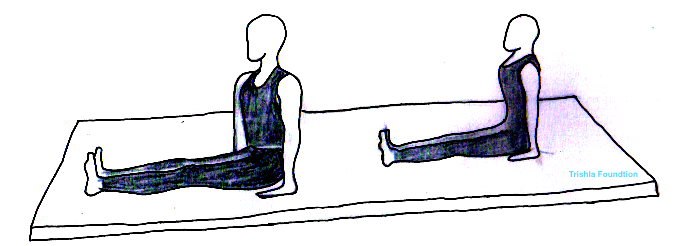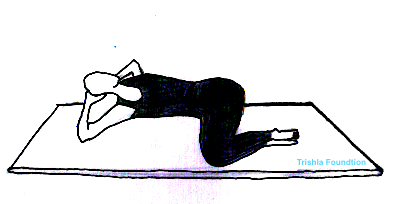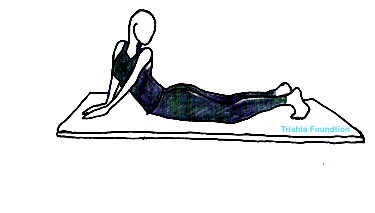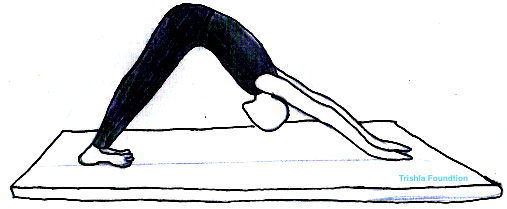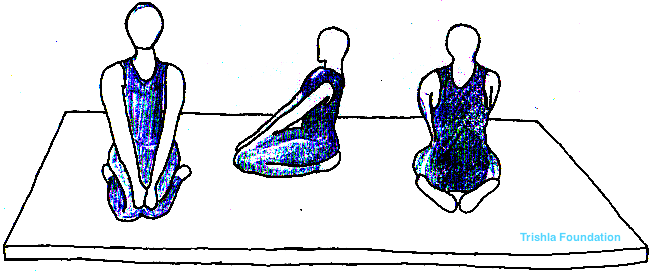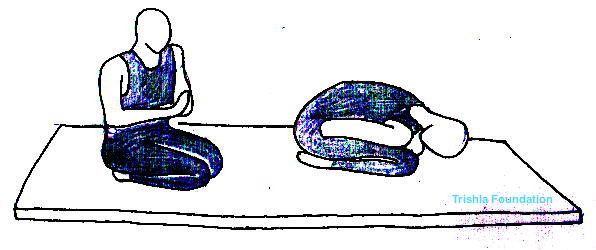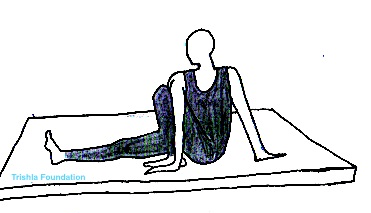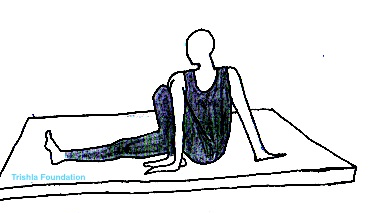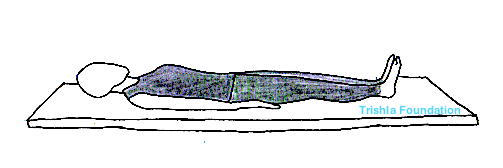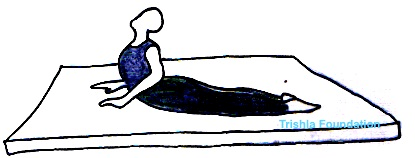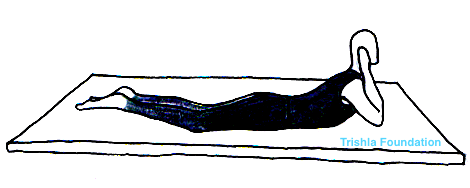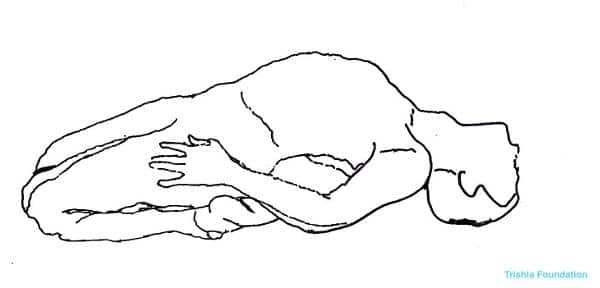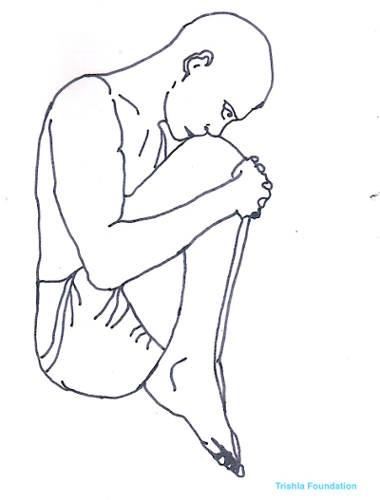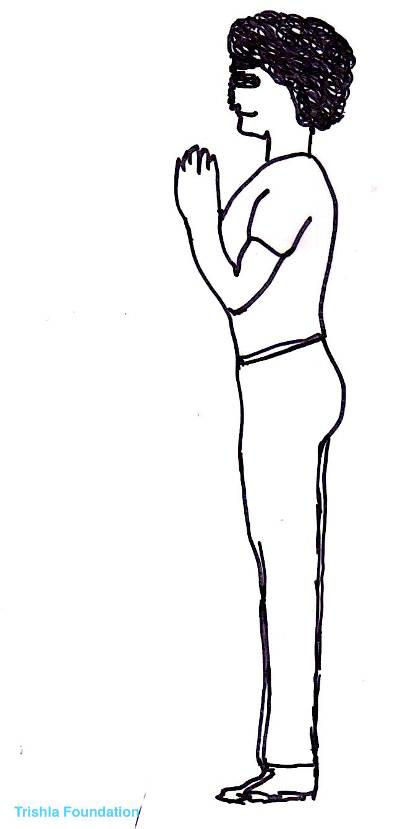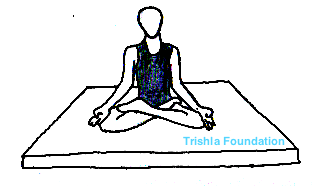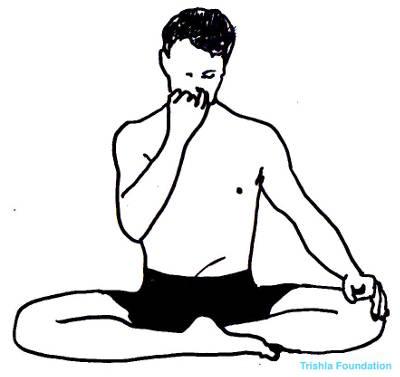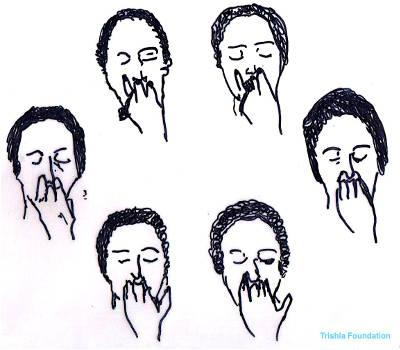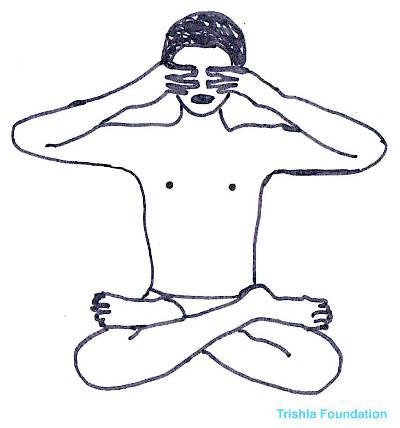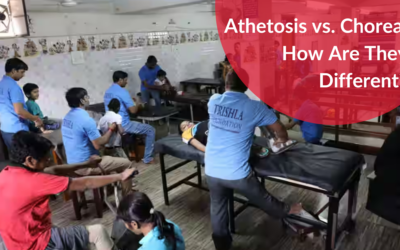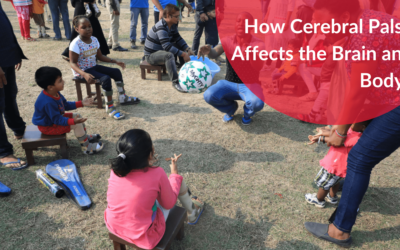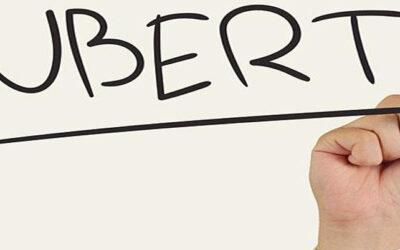Physiotherapy Treatment In Cerebral Palsy
Releted Posts
Cerebral Palsy
Cerebral Palsy Types
Cerebral Palsy Myths
Cerebral Palsy Surgery In India
Cerebral Palsy Children
Cerebral Palsy Defination
Cerebral Palsy Care Plan
Cerebral Palsy Prognosis
Cerebral Palsy Symptoms
Cerebral Palsy Treatment
Cerebral Palsy Therapy
Cerebral Palsy Organizations
Cerebral Palsy Living Style
Cerebral Palsy Birth Injury
Cerebral Palsy Associated Disorder
Cerebral Palsy Eating Feeding Tips
Cerebral Palsy Sleeping Disorder
Diplegia Spastic Cerebral Palsy
Spastic Cerebral Palsy
Yoga & Physiotherapy
Donate Now
Your one donation can give someone a new life
What Do You Understand By Physical Therapy In CP:
Physical therapy is the mainstay of treatment in cerebral palsy? We cannot cure brain damage but we can limit the progress of musculoskeletal problems.
Cerebral Palsy Physical therapy in cerebral palsy is a kind of special exercise to deal with the specific problems of these children and adults. It consists of traditional & advanced physical therapy.
Traditional physical therapy includes stretching, joint mobilization. This traditional therapy is not of much use in children with cerebral palsy and sometimes it harms children. Fast mobilization of joints creates a new problem of dyskinetic cerebral palsy patterns. Muscle sore & fracture of bone can occur with vigorous stretching.
Advance physical therapy includes strength training, NDT, SI, CIMT, HAND THERAPY, GAIT TRAINING, mirror therapy, YOGA, TRP & MRP, etc. Early age when the child is too much behind his milestone, intensive therapy is needed followed by maintenance therapy for a long duration. Intermittently with the increase in height and weight child develop a new set of problems that needs a small period of intensive therapy. As children matured they need more strength training, yoga, and gym to maintain stamina.
CP Patients Physical Therapy
Physical therapy is required in children with cerebral palsy for their whole life but the type of physical therapy may differ according to the problem, disability, age. At an early age, physical therapy is needed to manage the primary problem of balance, sensory issues, pelvic control and to get developmental milestones. But as age increases demands and type of physical therapy changes. We need to keep records of progress and needs as per requirement.
How Is Physical Therapy Performed?
It works on the principle of neuroplasticity of the brain. We have to train the normal neurons of the brain to perform the functions which a person otherwise learns naturally. Therefore we cannot jump to train a child for a walk, who does not know to sit. We have to follow the natural development pattern. There are many types of specialized techniques for physiotherapy use in cerebral palsy. We have to decide on a therapy program according to the age of the child, type of cerebral palsy, and severity of problems after a detail clinical assessment of a child.
Different Options Of Physical Therapy For Children With Cerebral Palsy:
Physiotherapy & Cerebral palsy occupational therapy is the main line of rehabilitation for children with cerebral palsy. We also take the help of other types of treatment modalities to help the child.
Specialized Physiotherapy along with judicious use of light wt polypropylene brace & walking aid is the mainstay of treatment. General & traditional physiotherapy including stretching & joint mobilization does not help. It requires highly advance techniques of physiotherapy. The techniques must be used according to age, type of CP, and condition of the child after full clinical assessment. some of the techniques used are NDT, SI, TRP, MRP, CIMT, Context therapy, Strength training, Mirror therapy, FES, Hydrotherapy, Horse riding different types of Yoga postures, etc. Along with therapy, some children with cerebral palsy may need botulinum toxin and surgery to manage associated spasticity and contracture.
The Goal Of Physical Therapy:
The goal of physiotherapy in a CP child is to make him as much functionally independent as possible so he/she can lead a life of their own. But it is not always possible. For a child above one year who cannot hold his neck, it is very difficult that him can walk on his own. With early intervention more than 60% of children can have a fully independent ambulatory life, 20% need assistive devices, and the rest 20% need good nursing care and full support from a family member.
How Can We Benefit From This Physical Therapy?
Physical therapy helps the child to regain functional & developmental milestones and maintaining stamina. By physical therapy, a child can work in a much better way. Physical therapy helps in maintaining bone and muscle health. Physical therapy can help in ambulation. If the child doesn’t have neck holding then different methods of exercise on the back, shoulder, and neck will help in regaining neck holding.
It also helps the child in sitting walking. Hand therapy will help the child in writing skills and catching the object in a much better way. During therapy, the child should be calm and be involved in the therapy program. Parents have to learn all exercises needed for the child so that they can do them at home.
Physiotherapy: Inspired By YOGA
Yogasana is an ancient practice for healthy living which involves moving the body and training the brain to achieve balance & well-being. The purpose of traditional yoga is to keep each individual healthy, both physically and mentally, and also to be able to achieve his/her highest potential as an individual. Meditation and yoga help to relieve anxiety and relax the tense muscles & strengthen a weakened muscle which helps in therapy.
What Are The Basic Areas Of Practice?
- Yogasana (body postures): Particular posture of the body which is steady and comfortable.
Active posture – Activate & strengthen the musculoskeletal system.
Actively assisted posture – Most individuals with disabilities require some assistance for doing and maintain yoga posture.
Passive posture – Employed in meditation, relaxation, pranayama. - Pranayama (breathing exercises) : Breathing exercise to increase vital capacity and breath-holding capacity.
- Deep relaxation/meditation: Chanting and relaxing in deep concentration gives a soothing effect on whole-body especially mental status.
How Does It Work?
Yogasana: Yoga is a practice that works simultaneously on the mind and body. Yoga decreases abnormal firing in already affected muscles so abnormal posture can be corrected in an easier way. It improves balance, coordination, strength, flexibility of the body, and strengthens the mind in turn. It focuses on slow controlled movement aimed at stretching & relaxing the muscle. You stretch & relax tight muscles along with strengthening weak muscles by holding a certain posture for a certain period.
Yoga Asanas significantly reduce high muscle tone. Holding an asana gives the muscles and tendons a relaxing stretch, releasing overall stress and tightness throughout the musculature and around the joints.
Yoga also provides enough resistance to low muscle tone areas of the body to strengthen muscles in children with hypotonic CP & weakened muscle.
Yoga stretches and counter-stretches paravertebral muscles and realigns the spine. It helps to create more space between the vertebrae and reduce pressure on the discs and nerves that radiate out of the spine. Reducing the pressure on these nerves facilitates the release of muscular tension throughout the body and enhances overall nerve function.
As a result, the child is able to develop a greater range of movement and coordination, as well as greater independence. The usual problem in cerebral palsy is in the cephalo-caudal direction and most of the time spinal & girdle muscles are affected more than distal muscles. Yoga helps a lot in strengthening spinal and girdle muscle so it helps in correcting gait pattern & sitting balance.
Yoga helps in digestion, breathing, stamina, and trunk control and helps in improving immunity.
Pranayama: The average person uses only about one-seventh of his total lung capacity. By doing deep breathing exercises, we can increase our vital capacity and increase the influx of vital energy to another part of the body especially the brain & digestive system. Pranayama also helps us in increasing our immunity to disease. Pranayama has a powerful stabilizing effect on the mind & emotion.
Meditation/Deep Relaxation: during this process, we try to concentrate our minds on our inner consciences.
Watch Our Success Stories
Cerebral palsy is a lifelong condition that affects individuals from infancy, presenting multiple challenges. As a parent & specialist, it's essential to have comprehensive information to navigate this journey.
Subscribe to our YouTube channel to access: Educational videos, Real-life case reports, Inspiring success stories
Stay informed, stay empowered!
Few Yoga Postures For Cerebral Palsy Affected Individual:
1. Paschimottanasana
this posture also maintaining the length of mildly spastic hamstring muscle but should not be utilized in patients with contracture or severe spasticity.
2. Udarkarshashana
with this posture we can control ATNR and spasm of the back & glutei muscle.
3 Tiryak Bhujangasana
in this posture we can control spasm of Para-vertebral muscle but children who have strong Shoulder & elbow muscles can only do this posture.
3 Tiryak Bhujangasana
in this posture we can control spasm of Para-vertebral muscle but children who have strong Shoulder & elbow muscles can only do this posture.
4. Parvatsna
This posture should not be managed in every child with cerebral palsy. This posture is being utilized in children who have good control of shoulder, hip, and back muscles. It is an excellent posture to stretch out hamstring muscle along with strengthening of quadriceps
5. Vajrasana
5. Vajrasana
6. Matsyendrasana
this step is a very important step in athetoid cerebral palsy.
7. Bhunanamana vajra asana
this posture also helps in stretching out hamstring muscle & back muscle
8. Vakrasana
this posture helps in stretching of hip abductor & tensor fascia lata.
9. Pawan-muktasana
this posture also helps in breaking up spasms of back muscle as well soothe & calm the child but initial posture should not be practice in children with a tight hamstring.
10. Setu-bandhasana
this posture is very helpful in stretching out hip flexor and also strength back & abdominal muscle
10. Setu-bandhasana
this posture is very helpful in stretching out hip flexor and also strength back & abdominal muscle
Check Physiotherapy and Cerebral Palsy Treatment Protocol at Trishla Foundation – Check Video
11 Bhujangasana
this posture helps a lot in regaining neck control and strengthening of para-vertible muscle of the upper part of the back.
12 Makarasana
this posture is an initial posture for neck control.
12 Makarasana
this posture is an initial posture for neck control.
13 Mayura-asana
this posture can be utilized in children with strong shoulder & elbow extensor muscles.
14 Supta Bhadrasana
this posture should only be practice when the body is in a relaxed posture.
14 Supta Bhadrasana
this posture should only be practice when the body is in a relaxed posture.
15. Purna pawan muktasana
very help full in athetoid CP
16 Dakchshsasana (first step of surya namaskar)
16 Dakchshsasana (first step of surya namaskar)
17 Sukhasana –
Sidhasana- Padmasana with increasing grade of complexity nearly similar posture. sukhasana is easier to do but rarely a person can do padmasana. this posture is an excellent way to control the spasm of the adductor muscle. It also helps in controlling the spasm of para-vertebral muscle. This yoga posture should be managed in a very gentle way. With the rapid application of this posture inpatient with weak bone, it can cause fracture of the femur and in cases, with a tight adductor, it can cause a sprain of the adductor muscle.
18 Pranayaam
this Yogaasana helps in relaxing the spasm of chest muscle as well as relax the child.
18 Pranayaam
this Yogaasana helps in relaxing the spasm of chest muscle as well as relax the child.
19 Anulom vilom
this posture is an excellent way to control chest muscle as well also helps in bowel movement, strengthen abdominal muscle.
20 Bhramari
this posture in relaxing the muscle and relaxing the mind so the child will be calm & quiet and will take active participation during exercise. We can also ask for chanting during this posture.
20 Bhramari
this posture in relaxing the muscle and relaxing the mind so the child will be calm & quiet and will take active participation during exercise. We can also ask for chanting during this posture.
Page Medically Reviewed and Edited
by DR. Jitendra Kumar Jain
Dr. Jitendra Kumar Jain is a renowned name in the field of childhood physical disability & orthopedics problems in North India. He has been an MS Orthopedics, DNB Orthopedics, Pediatric orthopedic surgeon & cerebral palsy specialist for over 21 years.
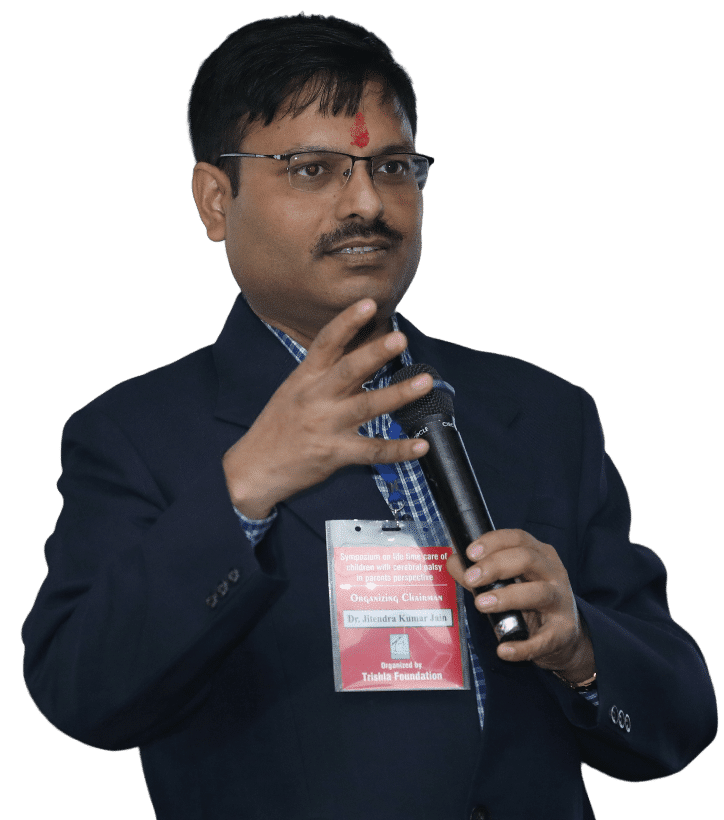

Page Medically Reviewed and Edited by DR. JITENDRA KUMAR JAIN
Dr. Jitendra Kumar Jain is a renowned name in the field of childhood physical disability & orthopedics problems in North India. He has been an MS Orthopedics, DNB Orthopedics, Pediatric orthopedic surgeon & cerebral palsy specialist for over 21 years.
Testimonials
1. What are the benefits of physiotherapy in cerebral palsy treatment?
Physiotherapy is a very crucial element in the treatment of CP because it will increase the overall strength of the child and improve their physical ability so they can achieve physical independence.
2. Does regular exercise helps in cerebral palsy?
It is proven that exercise will keep you healthy and fit and for the person with cerebral palsy is do the same. The person with cerebral palsy who exercise daily experienced many benefits in their overall physical movement and quality of life.
3. What are the best exercises for cerebral palsy?
There are so many exercises that are beneficial for a person with cerebral palsy. Here some of the exercises are stretching, dancing, trunk twist, and aerobics, yoga balancing etc.
Reference Sources:
Make a Difference
Support Trishla Foundation's Life-Changing Work for Children with Cerebral Palsy!
Together, we can break barriers and empower children with cerebral palsy. With your generous contribution, Trishla Foundation can continue its vital work in providing therapies, education, and support to these incredible children. Help us create a brighter future by donating today!

